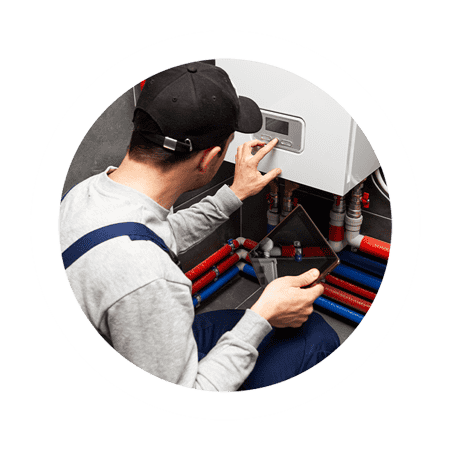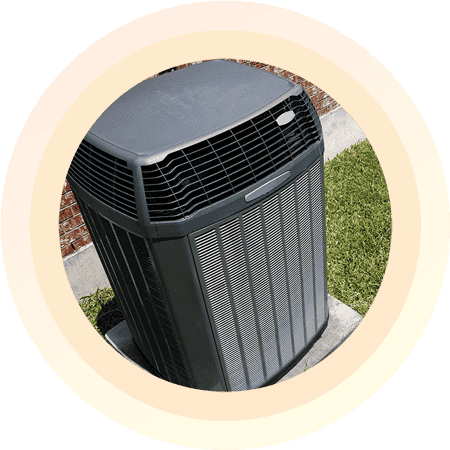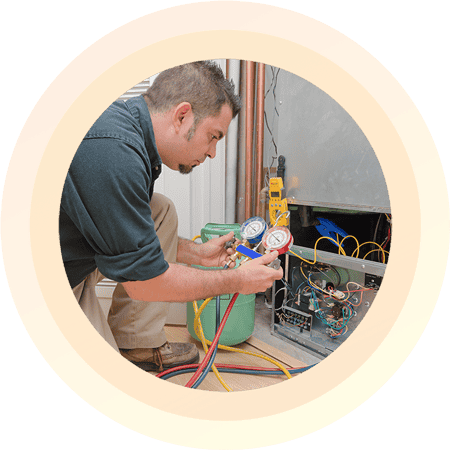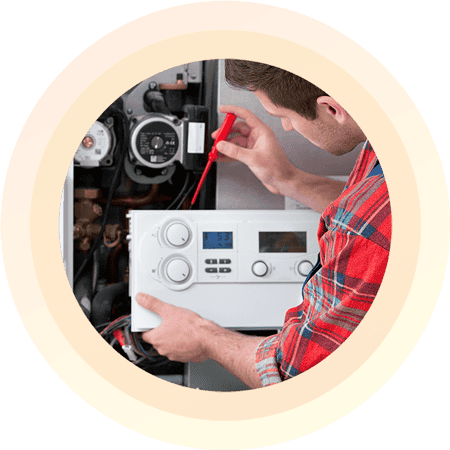Heating Repair Los Angeles
When winter gets too cold for comfort, call us for same-day heating repair in Los Angeles! We specialize in all types of heating and cooling systems. Whether you need heating repair for your boiler, heat pump, furnace, or anything in between, we can help!
Get in touch with California AC Heating Refrigeration today to schedule a service. We’ll be more than happy to get your home warm and cozy again.


Emergency Heating Services Available
Same-Day Heating Services in LA
We understand the urgency of repairing a broken heating system, especially during the chilly LA winters. That’s why we pride ourselves in offering same-day heating repair services to ensure our customers stay warm and comfortable.
Our team of expert technicians is equipped with the skills and tools necessary to diagnose and fix any heating issue quickly!
Whether it’s an installation, repair, service, maintenance, or replacement job, our professionals are committed to providing efficient and effective solutions. We prioritize customer satisfaction above all else and strive to exceed expectations with every service call.
Heating ServicesZero Risks, Zero Hassles!
Get Your Free AC Service Estimate!
Maximize The Lifespan of Your Heating System
Heating Tune-Ups & Inspections
Not all heating systems are the same. Thankfully, we offer heating services for all types of systems. Our team specializes in boilers, heat pumps, and furnaces. Our experienced technicians are highly trained to handle any issue that may arise with your heating system.
We even provide comprehensive inspections and tune-ups to diagnose the issue correctly. Our tune-ups include checking for any leaks, replacing filters, calibrating thermostats, and ensuring that all components are working efficiently.
We understand the importance of a functioning heating system, especially during the colder months, which is why we offer emergency heating repair to address any urgent repairs! Contact us today to schedule your heating service.
Schedule InspectionWarmer Homes With Every Service
Furnace & Boiler Repair Services
Did your furnace or boiler suddenly stop heating? We can fix that! The most common issue that furnaces and boilers face is a malfunctioning thermostat.
Our team of experienced technicians will quickly diagnose the problem and get your heating system back up and running in no time. Another common issue is that the furnace or boiler faces excess dirt and grime buildup.
We offer boiler and furnace cleanings to remove any dust and debris impacting the performance of your system. Excess particles can be the leading cause of poor heating.
Furnace & Boiler Services
Servicing Gas & Electric Heat Pumps
Heat Pump Repair Los Angeles
Are you tired of dealing with a faulty heat pump in your home? Look no further than our emergency heat pump repair services! Our team has the knowledge and experience to handle any issue that you may have.
Whether you need a simple repair or a full system replacement, we are here to help. We work on both gas and electric heat pumps. So, no matter the issue, we’re to help!
Heat Pump EstimateHeating Replacement For Businesses
We Offer Commercial Heating Repairs
Don’t let your business or office suffer another freezing day, potentially disrupting your production. We offer commercial heating repairs for all systems, like boilers, furnaces, and rooftop heating units.
Our team of experienced technicians is available to quickly diagnose and fix any issues, ensuring your business stays warm and comfortable. Don’t wait until it’s too late – contact us now for reliable commercial heating repairs!
Servicing LA & San Fernando Valley
Schedule A Heating Repair Service
Get your home or business warm and cozy again! Get in touch with California AC Heating Refrigeration today to schedule a heating service in Los Angeles, CA. We cover the entire San Fernando Valley and the surrounding Los Angeles area. Schedule a service today!
Schedule Now
